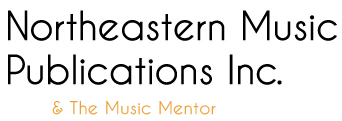Developing The Inner Ear
1. Choose one line to study first. Pick an instrument which is most familiar to you (possibly your own instrument).
A. Score order may not be the first or the best choice in which to begin. Usually it is best to begin with the melody.
B. Play the part on the piano.
C. Play it again, this time imagine the instrument playing the part-imagine the sound as well as picture the instrument in your head.
D. It is usually best to use a piano(not a very colorful sounding keyboard). I find it easier to imagine the sound of another instrument over the tone of the piano(as opposed to imagining the sound of the trumpet while playing the flute). Do not use a synthesizer with the instruments already programed. You want to develop you inner ear!
2. Choose another instrument.
A. Play the part on the piano.
B. Imagine the sound of that particular instrument.
C. Play both parts on the piano.
D.Imagine the sound of both instruments playing together.
3. Keep adding instruments until you have the basic sound of the composition in your head. However, do not go as far as to try the entire band on the first day. Try just a basic core group: flute, clarinet, alto sax, and trumpets.
4. Do no more than this on the first day.
5. At the band rehearsal.
A. Listen to the instruments play one at a time that you imagined earlier that day or the night before.
B. As you listen to these instruments to develop your inner ear, start to balance your band. This is a great way to make the students hear how the sound should blend and balance.
C. The more particular you are with your band, the better they will perform for you. Take this time to let them hear what you want the band to sound like. You will not have to do the entire song in this manner. Soon, they will catch own to what kind of sound you like, and how to balance and blend with each other.
D. When rehearsal is over, go to the score, and imagine the band(just the core group first) playing this arrangement.
E. Extend this exercise in small sections to the entire piece.
6. Take tiny steps. Build your inner ear one step at a time.
7. Eventually, you will not need the piano to help you hear these pitches. After a few sessions, sit down and imagine one instrument playing. Then two, and so on. You will be surprised how quickly you can develop this ability.



